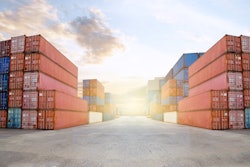
President-elect Joe Biden plans to hit the ground running when he enters office today. However, Biden’s long list of to-do’s is a robust supply chain strategy that will address the vulnerabilities exposed by the Coronavirus disease (COVID-19) pandemic. His administration has outlined a 100-day review that will “monitor supply chain vulnerabilities, designate vital products where the United States needs to address supply chain vulnerabilities and immediately close identified gaps.”
This past year has left no doubt of the necessity of doing that work. At the same time, we should caution against the call for a “more resilient supply chain,” recognize the weaknesses exposed in the traditional resilient model and embrace a more forward-looking, dynamic approach to supply chain management, one that really leans into agile processes and modern technology.
How resiliency is the blind spot
Biden’s administration has outlined three steps it plans to implement after the 100-day review:
● Use the federal government to rebuild U.S. domestic manufacturing capacity of supply chain for critical products with practices such as offshoring and building “long-term supply chain resilience” for pharmaceuticals;
● Implement a comprehensive approach for ensuring the United States has the supplies necessary for future crises with measures such as stockpiling, promoting surge capacity and plans for identifying and addressing potential shortages of critical items
● Work with allies to protect supply chain and open new markets to U.S. exports by taking action when trade agreements aren’t upheld and increasing exports.
Some of these initiatives nod in the right direction. Others, unfortunately, pull directly from the failed school of supply chain resiliency, which will no doubt backpedal us away from progress. That’s because resiliency was born in a previous generation and misinterprets supply chain’s current DNA.
For decades, advocates for resiliency have tried to reason that supply chains are best protected from future disruptions with extensive structural analyses such as inventory stockpiling, network optimization, and supplier auditing. Not only are these practices laborious and expensive, they are inherently flawed. Supply chain disruptions are like lightning strikes—unpredictable and capable of happening anywhere. Trying to problem-solve a mercurial issue with static, heavy-duty practices just doesn’t add up. Instead, supply chains should adopt a dynamic approach that responds to supply chain issues in real-time, is easy to adopt and seamlessly adapts to industry constraints as they evolve.
How to go dynamic in 2021
Biden’s administration can go dynamic by striking resilient-based recommendations from its plan and replacing them with modern best practices. Fortunately, some of his plan already caters toward a dynamic approach. Installing supply chain personnel in organizations that can identify and address shortage issues is a major step forward, as is expanding supply chain workforce with a robust training program to support their work.
Unfortunately, other practices skew too heavily toward a resiliency model. For instance, honing databases and stockpiling inventory to promote surge manufacturing capacity may sound obvious, considering supply chain’s inherently volatile nature, but they aren’t practical because inventory is expensive and no one knows where the next surge will be. Instead, organizations should work to ensure they’re constantly assessing their supply chains and refining their processes to handle any fluctuation, no matter its size or location.
The same logic applies to developing leadership that can effectively address supply chain disruptions while training their workforces. Supply chain professionals will need to implement supply chain best practices that include virtual war rooms that address immediate issues and long-term goals; educating employees on identifying incidents and determining their root causes, as well as assigning accountability for all issues. Adopting the right modern technology will power all these actions by providing easy-to-use tools, visibility into real-time supply chain dynamics and powerful analytics that deliver actionable insights.
Supply chains can and must be improved. Companies big and small and the world’s supply chain operators must work together to enact and enable change. But, real change will entail looking at all viable solutions and potential outcomes. This is not the time to put a band-aid on a wound and hope it heals. This is the time to reduce the chance of cutting ourselves in the first place.













